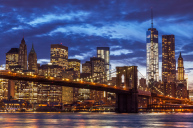Christmas time is a time of dazzling light shows. Every year millions of people decorate their homes and go out on adventures to find the best Christmas Light Shows. However, nature is putting on quite the Christmas show this year. Christmas Island National Park will feature millions of red crabs as they begin their migratory journey. Now that beats a light show any day.
Nature's Christmas Show At Christmas Island National Park

Shutterstock Photo by Sascha Caballero
While this island's name coincides with this incredible nature's Christmas show, it did not get it's name from the millions of red crabs along it's shores. Instead, the island got it's name from "Captain William Mynors of the British East India Company in 1643 when it was spotted on Christmas Day."
This Australian external territory is nestled among the waves of the Indian Ocean and is home to some incredibly diverse wildlife. Fox News shares that Christmas Island National park is "a spot full of luscious rainforests, diverse wildlife and beautiful beaches." While there is no shortage of activities to do at this incredible park, there is one phenomenon that keeps people coming back year after year.
The annual red crab migration, where millions of red crabs descend upon the beaches. Each year these crabs leave their forest homes and make their way to the big blue ocean. Parks Australia shares that they make this migration for breeding purposes.
When Can You See The Millions Of Red Crabs?

Shutterstock Photo of Flying Fish Cove by TravellingFatMan
If you want to witness these millions of red crabs make their migration then there a specific time you should visit. Peak season for this event on Christmas Island National Park typically occurs between October or November. However occasionally, the wet season and peak season for this migration can extend until December or January.
Be aware that if you visit during the migration, there will be a lot of road closures to help protect these weary travelers. If you want peak positioning to watch this migration you will want to visit, "Drumsite, Flying Fish Cove, Ethel Beach and Greta Beach."
A month after these millions of red crabs make their migration, you can spot their babies leaving the ocean and heading into their new forest home.




